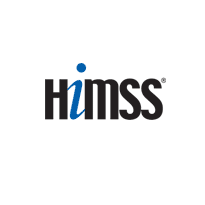Healthcare needs to be more like Walmart
- 12 March 2013

Healthcare providers need to become more like Amazon and Walmart and use technology to far better understand patients and help them to do the things they want to do.
Warner Thomas, chief executive of US healthcare provider Ochsner Health System, Louisiana’s largest healthcare provider, contrasted health with the way in which other industries use big data at the HIMMS 2013 trade show last week.
He argued other industries use analytics to gain really deep insights into their customers, and argued that as healthcare becomes digitised it needs to use the data it is amassing to tailor services for patients and gain insight into their future needs.
He pointed out that industries such as aviation have used technology to drive productivity; giving passengers the information they want on journeys and booking, without increasing prices. Health should follow their lead.
As another example, Thomas said that Walmart generates an astonishing 2.5 petabytes of data about its customers every hour. “They know more about their customers than their customers do.”
“Why aren’t we doing more like other industries, such as Amazon and Walmart?” he asked his audience in New Orleans. “Amazon knows how fast you read a book. Did you start and not finish?
“They know what we like and can tailor their service to our tastes. Why don’t we do the same in healthcare, so we know when someone wants to come in for an appointment?
“We should be asking what do our patients want, and asking ourselves ‘are we giving it to them?’”
He continued: “Do we understand patient needs? They want safe, high quality healthcare. It’s something they assume they will get. When get on plane, you don’t ask ‘is this a safe pilot?’”
Similarly, he said patients assume their care will be coordinated. “Patients never say, ‘I want organised coordinated healthcare’, they just want people to know what is going on.”
He urged the audience of health IT professionals to pick the best from other industries. “We don’t have to create this stuff just need to copy what is always going on.”
To achieve these types of outcomes requires rethinking what success looks like and what IT goals should be. “A successful electronic medical record go-live is a good start, its where we begin. Its what we do next that counts.”
He added: “We need to redefine success as: safer, higher quality care, at lower cost with employees who are happier and more productive. It’s a high bar but it’s a must have.”
He said that healthcare providers need to demand far more of their technology suppliers. He said they should push vendors to move beyond just selling software to really understanding the business issues they face and what patients want and need.
Challenges for suppliers include: “Do your IT systems provide safer, better patient experiences. Do we really optimise the use of those systems?" he said.
“Do you understand the problems we face as an organistion? And do you understand what patients want and need?”
EHI editor Jon Hoeksma reflects on the giant HIMSS 2013 trade show, and the lessons it had for the UK’s healthcare IT, in Insight.




